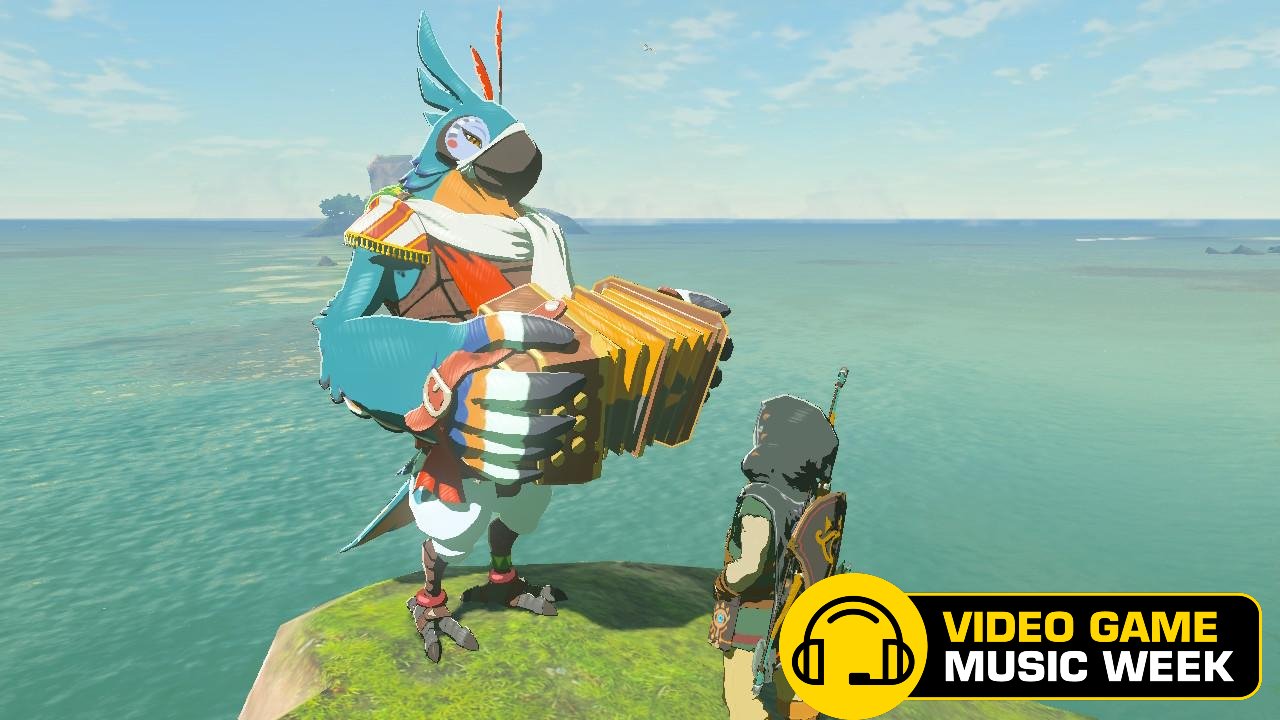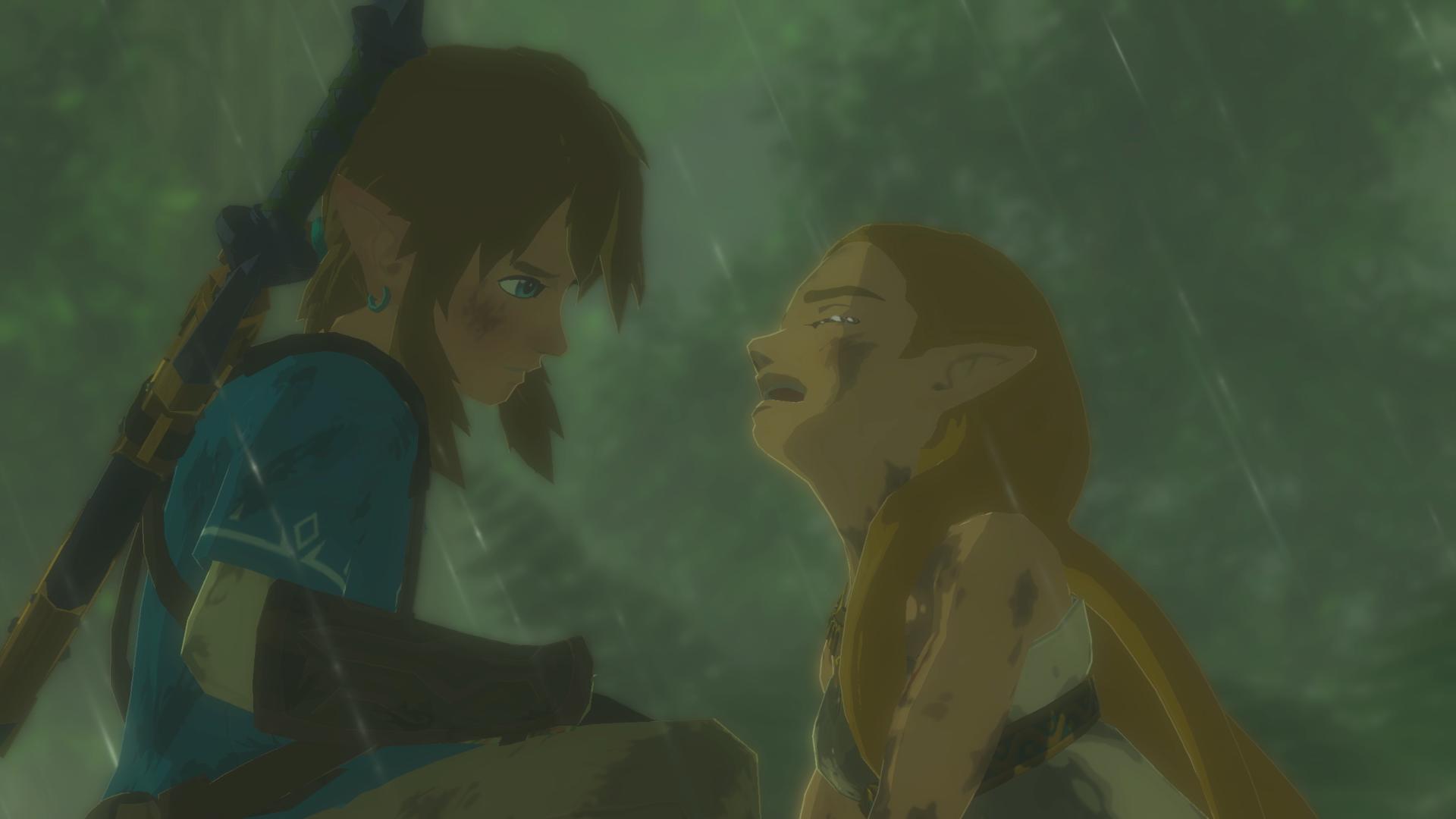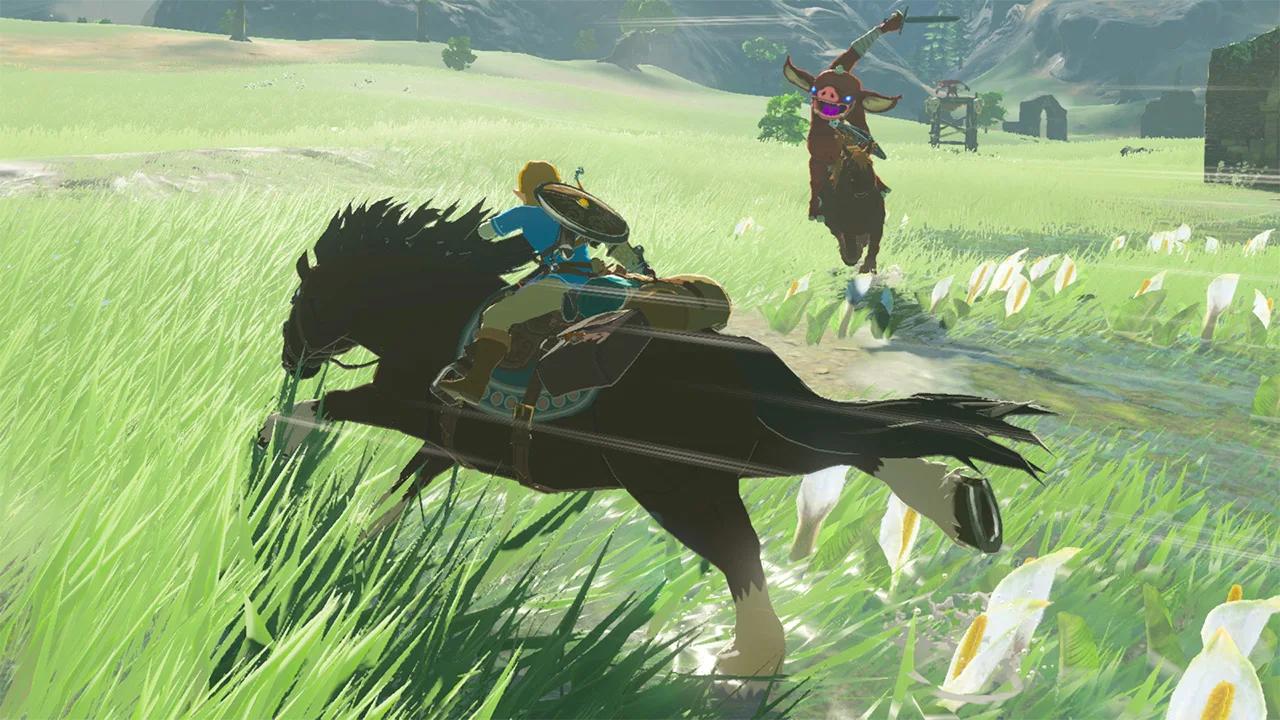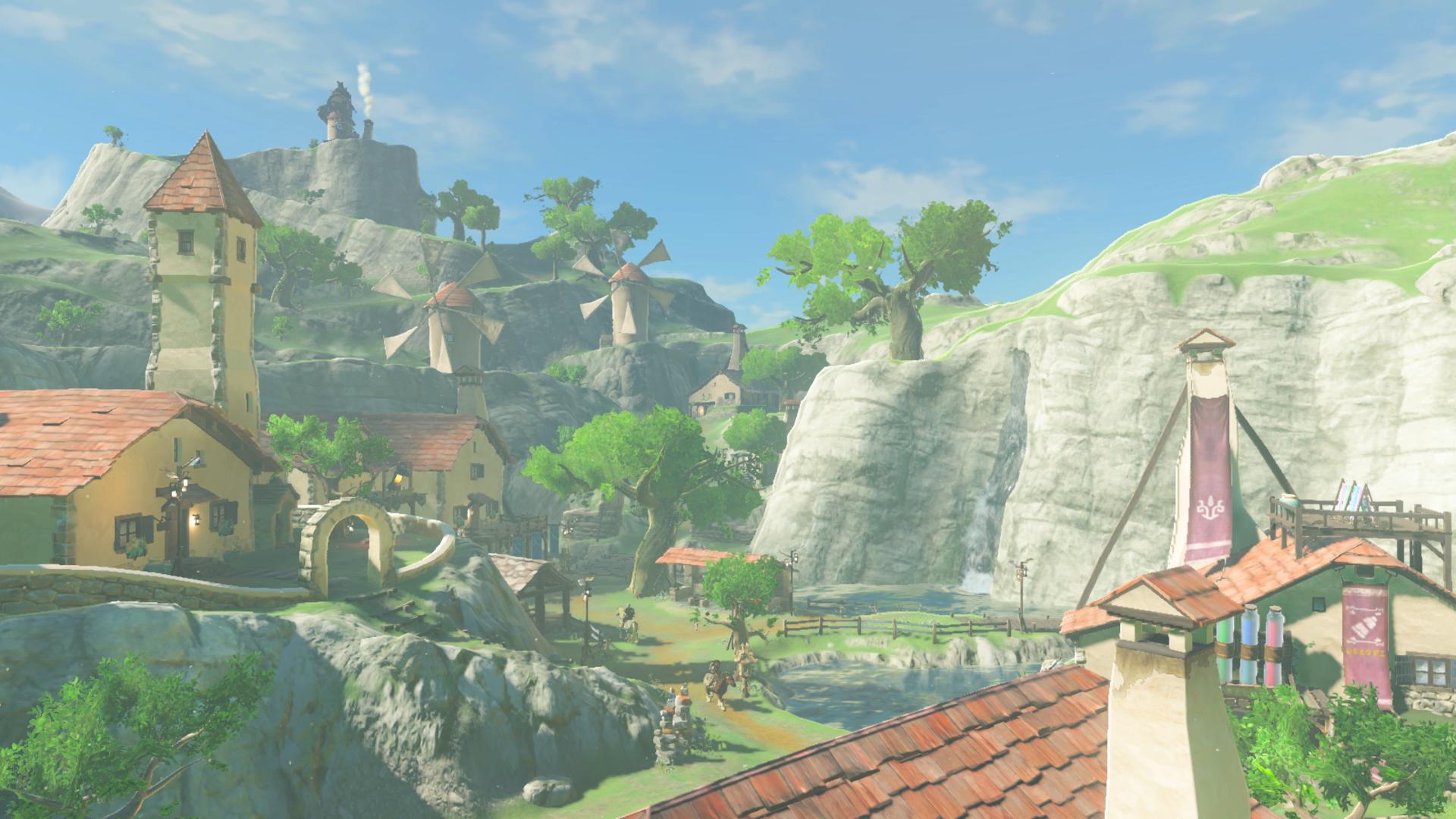Why The Legend of Zelda: Breath of the Wild's sound design is perfect

This week, we're celebrating video game music at Windows Central and iMore, from the tracks to the composers that created them. For more music appreciation, click here.
The Legend of Zelda: Breath of the Wild was the biggest game to launch alongside the Nintendo Switch in March 2017. According to the Game Director Hidemaro Fujibayashi, the game had been in "earnest" development since 2013. It was characterized by a few delays as the game, its world, and its sounds grew bigger. But the result was a breathtaking experience that changed the way many open-world games approached world design.
While Breath of the Wild received critical acclaim almost immediately after its release, some Zelda fans weren't too impressed by its soundtrack. The game's sound design was certainly divisive, being described by a quarter of pollers in a Giant Bomb poll as "empty" and "not memorable," with the field themes receiving the most criticism since the music would sometimes fade completely, leaving only ambient nature sounds.
After looking into it a little, I'm inclined to believe that Breath of the Wild's soundtrack fits the game's themes, mood, and message perfectly. Breath of the Wild is unique among Zelda games in not only its open world mechanics, but in the way it tells its story through environmental storytelling and tasking players with seeking it out themselves. I find it unfair to compare it to past Zelda titles, since this game is unlike any Zelda game before it.
The beginning of a new era

Trends exist in a cyclical fashion, and video games are no exception. Similarly, artists can draw inspiration from trends that aren't current if it's what's most appropriate. The style of music in previous 3D Zelda titles, according to YouTuber pixeltea, is most reminiscent of the Romantic Era, which lasted from the 18th-19th century and was known for provoking strong emotions and longing. These games center a hero on his way to face a great battle, with epic music and heart-thumping scores accompanying the player as they journey to save the world.
In contrast, The Legend of Zelda: Breath of the Wild's music is most reminiscent of the Impressionist Era, spanning the 19th and 20th centuries. This era's music invokes more ambiguous feelings and focuses on nature and its atmosphere. If you think that this perfectly describes Breath of the Wild, you'd be correct. Breath of the Wild's version of Hyrule is the most vast it's ever been, being 12 times the size of the world in Twilight Princess, according to the game's director. There is a plethora of different biomes, landscapes, geographical phenomena, all of which portray a land that went through a devastating battle 100 years ago.
Setting the mood

Breath of the Wild's story is told through its environment and the 13 optional memories that detail Link's life, his work as a soldier, the friends he's made, his relationship with Princess Zelda, and how the great battle ended 100 years ago. And while it may not seem like it at first, Breath of the Wild is a game about grief, guilt, and introspection.
iMore offers spot-on advice and guidance from our team of experts, with decades of Apple device experience to lean on. Learn more with iMore!
Every person Link knew — save for Zelda, Impa, and some of the residents of Zora's Domain — is dead, along with most of the population of Hyrule. They died because he failed to seal the darkness, and Link has to process all of that while trying to rectify his wrongs. He's traveling to various towns, observing the region's landscapes, and what they may have looked like in his memories, if he had them. Link spends so much time trying to regain his memories, being treated like a failure in some cases. It's a situation that would be heavy for anyone.
An important factor to consider is the timeline (no, not that timeline) of these games. In other 3D Zelda games with adventurous scores, Link is getting hyped, feeling anxious and excited, and thinking about his desire to overcome villains like Ganon and Ganondorf. But in Breath of the Wild, that epic battle has already happened. Worse yet, the good guys lost. In other words, past 3D Zelda games are about anticipation while Breath of the Wild is about realization.
Now, think about instruments that you associate with sadness and tragedy. The piano, for example, is often conflated with seriousness and melancholy. It feels appropriate then that the musical scores heard across the vast fields of Hyrule are dotted with piano notes. Breath of the Wild's sound director, Hajime Wakai, states that the use of piano as a predominant instrument in the game's sound design was a series first, and was meant to accentuate ambient sounds. These scores are thoughtful, atmospheric, and a bit sad, which is fitting for the game's overall mood. After all, it would be inappropriate to incorporate an epic score with trumpets and drums when Link is trying to come to terms with his own survivor's guilt.
It's all in the details

There is a lot of walking in Breath of the Wild. When you're not on a horse, you're constantly listening to Link's footsteps and nature sounds. These ambient sounds were the team's main focus, and players are exposed to them from start to finish. Scenery was meant to feel as authentic as possible, from the bird and tree sounds to the sound of Link's footsteps.
If you listen closely, you can hear the sound of Link's feet hitting the ground as he walks and runs. These sounds change depending on his speed, the type of surface he's moving on, the shoes he wears, and the level of stealth he executes. Wakai expressed that Foley recording was used to best showcase these different sounds, even going so far as to have a specific sound for the way Link's weapons and shield rattle on his back depending on what armor he wears and how stealthy he is. It's by no means required for a good experience, but it enhances the immersion in a way no Nintendo game had done before.
Players may also notice that the field theme can sometimes fade away entirely, leaving behind only the sounds of nature and Link's feet (or his horse's hooves, if on horseback). Even the weather affects how the music sounds while traveling. In some snowy regions, a muted filter is applied to the overworld theme while it's snowing, changing as the weather clears once more. While some may be quick to declare this as proof of Breath of the Wild having "no music," the intentional fades represent how empty Hyrule has become after its destruction and gives you a better sense of how far away you are from towns or other areas.
This is further expanded to other elements, such as fire. There is a different sound for a fire started in greenery, a fire at a campsite, a torch fire, a fire arrow, and even a fire arrow being extinguished by water. Any items dropped into water will have a different "plop!" sound depending on their size, weight, shape, and what material they're made of.
According to Wakai, around a quarter of the tracks in Breath of the Wild incorporate melodies from past games. However, the development team made sure to not make these songs "nostalgia bait," choosing instead to ease these melodies into the background. Many songs from past games are hidden in more obscure places, like Zelda's Lullaby and the main Legend of Zelda theme being incorporated into the horse riding music, the shrine theme being a remix of the Light World dungeon theme from A Link to the Past, and, strangely enough, the Stone Talus theme resembling the GameCube intro jingle.
When you encounter these classic tunes, there's a brief moment of déjà vu that arises, the music is recognizable, yet different, but you just can't put your finger on it. This mirrors the experience that Link himself has throughout the game, where he sees things from a century ago that lightly jog the memories that he lost. I think the inclusion of these songs is important, as they help the player relate to Link even more, even if subconsciously. These details feel so commonplace now, but if you were to have them taken away, the game would certainly suffer.
Home sweet home(town)

Each town in Breath of the Wild also has its own theme, incorporating appropriate instruments that convey the atmosphere and heritage of those living there. Lurelin Village has a distinct steelpan accompanying its score, instantly making me think of calypso music from my homeland. Some towns even incorporate music from past games, such as the Zora's Domain in Breath of the Wild using music from the Ocarina of Time's region of the same name. Each also has both a day and night theme, with differing tempos for each one. As was illustrated by Scruffy, the town themes each have a dawn and a dusk bridge, to ease the player from one time of day to the other. Wakai admitted that these bridges were constructed in such a way to make the transition as seamless as possible so most players would miss its presence.
By far the most dynamic town theme is from Tarrey Town, which is directly tied to the "From the Ground Up" sidequest. After purchasing his old home in Hateno Village, Link is asked to supply materials to build Tarrey Town, as well as help unhappy NPCs from around the map find their purpose in the new village. With each NPC sent to the village, the music changes, incorporating new instruments that represent their cultures. The Goron adds a horn, the Gerudo adds a sitar, the Rito adds an oboe, and the Zora adds some chimes that bring the whole theme depth.
You can listen to how the Tarrey Town tune changes in Mark Brown's video here:
The town themes, in stark contrast to the desolate and sad field theme, are lively and joyful, representing various cultures thriving in spite of the carnage left behind. However, that doesn't mean that the field theme is unimportant or even bad. Town themes will begin to play and grow or diminish in intensity the nearer or further away Link travels from said town. The piano melody at the start of a field theme represents the player's exit from a town, and signals that Link will now continue his journey.
Other places and characters draw the player to them. The stable theme, the Fang and Bone Shop theme, and Kass' theme each impose themselves onto the field theme, forcing the player to pay attention. Players are then incentivized to play a sort of Marco Polo game with these points of interest, as their themes willl wax and wane in intensity depending on how close you are to them. In the case of the stables, they provide a place to rest and chat with Hylians, while Kass provides new quests to shake up the gameplay from time to time. Kass' theme evolves as players progress through his quests as well, eventually becoming a stunning rendition of the main Legend of Zelda theme. Music is used in Breath of the Wild to mark progression and the evolution of the player's knowledge and skill, a first for the series.
Now let's see them fisticuffs!

What's an action adventure game without combat? Breath of the Wild has a ton of enemies littered across its map, and while the enemies aren't as varied as some players would like, they do come with some bangin' music. The piano in Breath of the Wild never stops, and it follows the combat theme alongside percussion sounds when Link is in the vicinity of an enemy to signal that it's time to get serious.
The combat theme cycles between three keys and two different versions that change depending on the difficulty of the enemy. Landing a hit will also produce a percussion note that implies impact, further immersing the player in what's going on. While enemies are mostly silent, many bellow out a dying cry that signals to the player that they've won this battle.
You can see this in action in Scruffy's video on the invisible sound design in Breath of the Wild:
Different weapons have different sounds depending on their size, shape, and materials. Wooden weapons hit differently than metal or guardian weapons do, and bowstrings will make a different sound depending on how far their draw distance is, with shorter bowstrings sounding more taut. After using a signature weapon for a while, this may not be as apparent, but upon using a new weapon, some players notice the difference instantly.
Mini bosses have their own distinct theme. If you've played Breath of the Wild one time, you'll never forget the high-pitched piano riff that preludes the Guardian theme. I don't know about you, but this song makes my blood run cold and activates my fight-or-flight response quicker than a Korok can say, "Ya ha ha!" The Guardian theme makes an impact on the player, bringing up memories of previous encounters and threats. Moldugas, Stone Taluses, and Hinoxes each have a distinct score as well, illustrating the excitement felt in a battle with a giant beast. Each of these elements shake up the combat and travel all the way to the game's ending.
Appealing to the melody of my heart
Breath of the Wild is my favorite Zelda game, for a variety of reasons. By far my favorite aspect is the player choice involved — you are entirely in charge of how the game's events play out, and the game doesn't punish players for failing to complete a shrine or a dungeon. Every person who plays this game will have a different experience, which I think makes it incredibly special. Breath of the Wild almost feels like a hybrid of an action role-playing game and a simulation game, and as someone who enjoys the latter, it encapsulates what being an adventurer in a vast, danger-filled world feels like for me.
From the themes and story that players must find on their own, the way the game doesn't lock the player into completing certain dungeons in order to finish the game, and the wide array of sounds and melodies just waiting for me to discover them, this game is brilliantly constructed. I believe that Breath of the Wild is incomparable to other 3D Zelda games, because the objective is so different — coming to terms with a failed battle rather than anticipating an upcoming one.
When you keep this in mind, the choices made by the sound design team become even more obvious and appropriate. I expect no less of the sequel to Breath of the Wild, and I can't wait to uncover all-new songs when that game finally releases.

The crème de la crème of Switch games.
The latest mainline game in the Legend of Zelda series, Breath of the Wild breaks almost every classical Zelda convention and transforms it into something unique. With enough content to last hundreds of hours, this is without a doubt one of the best games on the system.

Nadine is a freelance writer for iMore with a specialty in all things Nintendo, often working on news, guides, reviews, and editorials. She's been a huge Nintendo fan ever since she got to pet her very own Nintendog, and enjoys looking at Nintendo's place in the video game industry. Writing is her passion, but she mostly does it so that she can pay off her ever-growing debt to Tom Nook. Her favorite genres are simulation games, rhythm games, visual novels, and platformers. You can find her at @stopthenadness on Twitter, where she'll more than likely be reposting cute Animal Crossing content.
